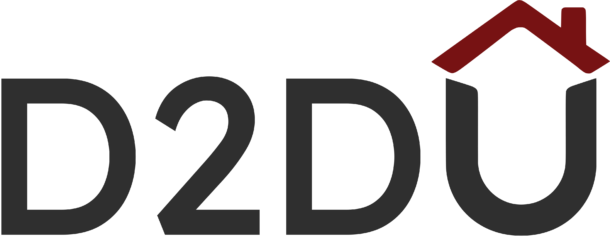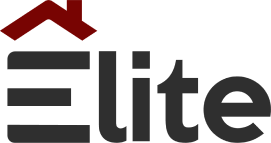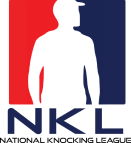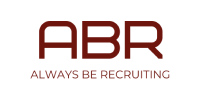Have you ever wondered why some sales conversations flow effortlessly while others hit roadblocks? Read on to discover proven psychological tactics that top reps use to connect, persuade, and close more deals. By the time you finish, you’ll know how to:
- Build instant rapport and earn trust
- Frame your offers to highlight gains and minimize fears
- Tailor your messaging for each phase of a prospect’s journey
- Welcome objections as signals of engagement
- Choose the right moment and language to confidently ask for the sale
Building Rapport and Trust
Trust is everything in sales. Buyers base most of their decisions on gut feeling, and a lack of trust triggers risk aversion business.com. According to HubSpot, prospects often start in a neutral zone—they don’t distrust you, but they haven’t fully bought in either HubSpot Blog. In our YouTube video The Psychology Behind Why They Trust You (or Don’t), The D2D Experts emphasize that demonstrating genuine empathy and expertise in the first 30 seconds can boost receptivity by up to 30% YouTube.
Key Practices
- Active listening. Show you’re fully present by mirroring language and asking clarifying questions.
- Small-yes framework. Get quick agreements on minor points to create momentum.
- Authentic transparency. Admit when you don’t know an answer and offer to follow up.
- Consistent follow-through. Every promise kept builds reliability, a core component of the Trust Equation HubSpot Blog.
For more on rapport tactics, check out our case study on How Much Can You Make Selling Door to Door.
The Power of Framing and Language
How you present information often matters more than the facts themselves. When you emphasize gains instead of losses, prospects feel more optimistic PON Harvard Law. Framing also leverages anchoring: the first number or comparison you mention sets the bar for everything that follows PON Harvard Law.
According to Sam Taggart, founder of The D2D Experts, avoid words like “problem” in favor of “challenge,” swap “contract” for “service agreement,” and refer to dollars as “bucks” to maintain a positive, value-focused tone.
High-impact Words
- Because. In Ellen Langer’s landmark copy-machine study, adding any “because” reason jumped compliance from 60% to 93%, even if the reason was trivial Psychology Today James Clear.
- Imagine. Helps prospects visualize outcomes and future benefits.
- You. Centers the message on the buyer’s needs, increasing engagement.
- New. Sparks curiosity and signals innovation.
Use these words sparingly but strategically to guide attention and build perceived value.
Tapping into the Buyer’s Journey
Not every message works at every stage. Align your approach to where prospects are in their journey.
Awareness Stage
Prospects sense a need but don’t know the full scope of their challenge. They seek education, not pitches.
- Content: Blog posts, infographics, short videos explaining common pain points.
- Tone: Empathetic educator.
Consideration Stage
Now they’re comparing solution types. They want proof your approach fits their needs.
- Content: Comparison guides, case studies, expert interviews.
- Tone: Consultative advisor.
Decision Stage
Buyers evaluate specific vendors. They look for validation and clarity on next steps.
- Content: Detailed demos, transparent pricing, testimonials.
- Tone: Confident partner.
Each stage demands different proof points and calls to action. This alignment can boost conversion by over 30%.
Overcoming Objections
Objections often mask deeper concerns. Viewed correctly, they’re engagement signals, not rejection.
Common Objections & Strategies
| Objection Type | Underlying Psychology | Reframe Approach |
|---|---|---|
| “Too expensive.” | Loss aversion | Highlight long-term ROI and cost of delay |
| “Not the right time.” | Procrastination, fear of change | Quantify ongoing pain; set clear follow-up dates |
| “I need to think about it.” | Unarticulated doubts | Ask probing questions: “What’s top of mind?” |
| “We’re happy with current.” | Status quo bias | Showcase specific gains over existing solution |
Effective objection handling follows the LAER model: Listen, Acknowledge, Explore, Respond. Preparing for top objections raises close rates as high as 64%.
Conquering Closing Fears: “Eat What You Kill” Meets “Selling With Love”
According to Sam Taggart—“Eat What You Kill” author and D2D Experts founder “Most salespeople stay broke because they fear putting their name on the line”. In Episode 458 of The D2D Podcast, Sam and Jason Marc Campbell—author of Selling With Love—reveal how grit and empathy join forces to conquer closing anxiety.
- Early Wins Build Confidence. Jason’s first gig selling chocolate bars led to fun interactions—and even romance! Positive early experiences anchor sales as value exchanges, not chores.
- Love the Impact. Drill past features to emotional benefits and community ripple effects. This “why” fuels persistence on tough days.
- Play the Long Game. Integrity compounds. Passing on a $100K deal once led to a bigger win later, proving relationships beat single-sale tactics.
- Self-Love: You’re Worthy. Believing you deserve to close eliminates finish-line fear. Invest in your growth—books, bootcamps, or apps—to cement that self-worth.
Integrate these mindsets to close with both fierce drive and genuine care.
Closing the Sale with Confidence
Closing feels natural when timing and clarity align. According to HubSpot, recognizing buying signals—questions about pricing, next steps, or implementation—tells you it’s time to close.
Soft vs. Direct Approaches
- Soft closes (e.g., Option Close: “Would you prefer the quarterly plan or annual plan?”) maintain control for hesitant buyers and build rapport.
- Direct closes (e.g., Assumptive Close: “Great, let’s schedule your installation for Tuesday. Does that work?”) accelerate decisions when signals are strong.
In both cases, be crystal clear on what comes next—solution scope, value recap, and precise terms. This clarity reduces buyer uncertainty and speeds commitment.
Ready to Take Action?
Apply these psychological insights today. If you’re serious about leveling up your door-to-door results, this sales bootcamp mindset is where it starts—let’s talk.
Feel free to bookmark this guide or share it with your team. Your next record-setting month starts with mastering the human element of selling.
Albert Brand boasts over a decade of expertise in the telecommunications industry, with a particular emphasis on fiber optics sales. His rich career spans both corporate roles and entrepreneurial ventures in sales fulfillment. With a proven track record in door-to-door sales, especially in the fiber optics domain, Albert has seamlessly bridged the gap between corporate leadership and hands-on sales, showcasing his versatility and commitment to excellence in this specialized field.























